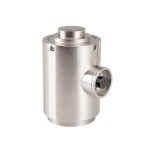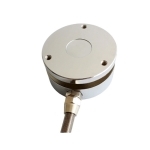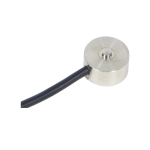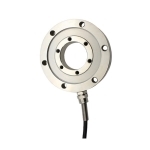Load Cell
Compression Type Load Cell, 300kg-100 ton
Digital Load Cell Amplifier, 4-20mA/0-10V/RS485 Output
Display Controller for Load Cells, 6 Digit
Miniature Tension and Compression Load Cell, 1kg~500kg
S Shaped Load Cell, 1kg-7 ton
Compression Load Cell for Weight Measurement, 300kg-30 ton
Load Cell Transmitter, 4-20mA/0-5V/0-10V Output
Mini Tension and Compression Load Cell, Stainless Steel
S Type Load Cell for Tension/Compression, 5kg-20 ton
Accurate Tension and Compression Load Cell, 100kg~20 ton
Display Controller for Load Cells, 5 Digit
Load Cell Weight Transmitter, 0-5V/0-10V/4-20mA Output
Precision Load Cell, 10kN-100kN
S Beam Load Cell, 50kg-5 ton
Compact Tension and Compression Load Cell, 0-20kN
Load Cell Transmitter with TEDS, 3/6/9 Channel
Pancake Load Cell for Silo, 50 ton-500 ton
Tension and Compression Load Cell, S Type, 200kg-5 ton
Column Load Cell, Double Flange, 5 ton-30 ton
Load Cell Display Controller, 5 Digit, 2 Realy Output
- 1
- 2
A load cell is a measuring device that converts weight or force into an electrical signal. It is a core component of modern electronic scales and automated measurement systems. It converts changes in an object's weight into a processable electrical signal, enabling precise weighing, monitoring, and control. Load cells can be connected to dedicated digital panel meters for direct readings or to load cell transmitters/amplifiers to output standard signals (0-5V, 0-10V, 0-±10V, 4-20mA, or RS485). Load cells are widely used in electronic scales, industrial production lines, logistics, and laboratory testing. SUCH online store offers a variety of load cells, including S-type, cantilever, spoke, plate-ring, diaphragm, bridge, and column types.
Working Principle of Load Cells
Load cells typically operate based on the strain gauge principle. Strain gauges, elastomers, and detection circuits are essential components of a strain gauge load cell. When an external force acts on the sensor's elastic body (elastic element, sensitive beam), the body deforms slightly, causing the resistance of the strain gauge (conversion element) attached to its surface to change accordingly. This resistance change is converted into an electrical signal (voltage or current) by a corresponding measurement circuit. After amplification and processing, an output signal proportional to the weight is obtained. Different types of sensors may use piezoelectric, capacitive, or electromagnetic principles, but the core concept is the conversion of force into an electrical signal.
Classification of Load Cells
Load cells can be categorized into different shapes according to their shapes, such as S-type, column, flat, push-button, ring, and pin type. Among them, S-type load cell is the most widely used.
S Type Load Cell
 S type load cells typically appear as a symmetrical curved beam structure with threaded holes or lugs at both ends for mounting. The main body is typically made of high-strength alloy steel or stainless steel, and the surface is often treated with anti-corrosion treatments such as nickel plating to enhance environmental adaptability. Its core features are compact structure, high accuracy, and excellent bidirectional load capacity. It can measure both tension and compression. The centerline alignment requirements during installation are relatively moderate, facilitating flexible deployment in a variety of scenarios. Regarding the type of force being measured, the S-type load cell is a dual-purpose tension and compression sensor, accurately capturing tension or compression signals along the sensor's axis.
S type load cells typically appear as a symmetrical curved beam structure with threaded holes or lugs at both ends for mounting. The main body is typically made of high-strength alloy steel or stainless steel, and the surface is often treated with anti-corrosion treatments such as nickel plating to enhance environmental adaptability. Its core features are compact structure, high accuracy, and excellent bidirectional load capacity. It can measure both tension and compression. The centerline alignment requirements during installation are relatively moderate, facilitating flexible deployment in a variety of scenarios. Regarding the type of force being measured, the S-type load cell is a dual-purpose tension and compression sensor, accurately capturing tension or compression signals along the sensor's axis.
Column Load Cell
 Column load cells are cylindrical in shape, with either a solid or hollow body. The top and bottom are typically designed with flat surfaces or internal or external threaded connections for securement to a load-bearing device or foundation. Column load cells are typically constructed of high-strength alloy steel, resulting in a robust overall structure and strong resistance to shock and overload. Column load cells have an extremely wide measurement range, covering large tonnages from a few tons to hundreds or even thousands of tons. They also offer excellent linearity and stability. The symmetry of the cylindrical structure ensures uniform stress distribution under load, effectively reducing measurement errors caused by off-center loading. Column load cells are primarily used for compressive force signals perpendicular to the upper and lower mounting surfaces.
Column load cells are cylindrical in shape, with either a solid or hollow body. The top and bottom are typically designed with flat surfaces or internal or external threaded connections for securement to a load-bearing device or foundation. Column load cells are typically constructed of high-strength alloy steel, resulting in a robust overall structure and strong resistance to shock and overload. Column load cells have an extremely wide measurement range, covering large tonnages from a few tons to hundreds or even thousands of tons. They also offer excellent linearity and stability. The symmetry of the cylindrical structure ensures uniform stress distribution under load, effectively reducing measurement errors caused by off-center loading. Column load cells are primarily used for compressive force signals perpendicular to the upper and lower mounting surfaces.
Flat Load Cell
 Flat load cells have a flat top for load bearing and mounting holes, or a fixed base on the bottom. They are typically made of stainless steel or alloy steel and may feature a hermetic coating to withstand harsh environments such as moisture and dust. Flat load cells have a low mounting height, making them ideal for installations with limited space. Their large load-bearing area effectively distributes the load and reduces localized stress concentrations. They offer high accuracy, excellent long-term stability, and a certain degree of resistance to lateral forces and off-center loads. Flat load cells primarily measure axial compressive forces, primarily measuring the compressive force signal perpendicular to the top surface, making them particularly suitable for measuring evenly distributed loads.
Flat load cells have a flat top for load bearing and mounting holes, or a fixed base on the bottom. They are typically made of stainless steel or alloy steel and may feature a hermetic coating to withstand harsh environments such as moisture and dust. Flat load cells have a low mounting height, making them ideal for installations with limited space. Their large load-bearing area effectively distributes the load and reduces localized stress concentrations. They offer high accuracy, excellent long-term stability, and a certain degree of resistance to lateral forces and off-center loads. Flat load cells primarily measure axial compressive forces, primarily measuring the compressive force signal perpendicular to the top surface, making them particularly suitable for measuring evenly distributed loads.
Button Type Load Cell
 Button-type load cells are small and circular, button-shaped, with a compact overall structure and extremely low height. The top of a button-type load cell is a circular load-bearing surface, and the bottom is equipped with pins or threaded holes for installation and signal output. It is usually made of stainless steel or high-strength alloy, and the surface is usually precision-machined to ensure a flat load-bearing surface. Its main features are small size, light weight, and low installation space requirements. It also has the characteristics of fast response speed and excellent dynamic performance. It can quickly capture instantaneous force changes with high precision, and is suitable for small-range force measurement. The button-type load cell is a compression load cell, but due to structural limitations, its ability to resist lateral forces is relatively weak, and the load needs to be applied vertically to the center load-bearing surface.
Button-type load cells are small and circular, button-shaped, with a compact overall structure and extremely low height. The top of a button-type load cell is a circular load-bearing surface, and the bottom is equipped with pins or threaded holes for installation and signal output. It is usually made of stainless steel or high-strength alloy, and the surface is usually precision-machined to ensure a flat load-bearing surface. Its main features are small size, light weight, and low installation space requirements. It also has the characteristics of fast response speed and excellent dynamic performance. It can quickly capture instantaneous force changes with high precision, and is suitable for small-range force measurement. The button-type load cell is a compression load cell, but due to structural limitations, its ability to resist lateral forces is relatively weak, and the load needs to be applied vertically to the center load-bearing surface.
Ring Type Load Cell
 Ring type load cells are compression load cells with a circular appearance and a central circular hole. Mounting holes are located on either the outer or inner ring. Ring load cells are typically made of high-strength alloy steel or stainless steel, and their structural design emphasizes symmetry to ensure even force distribution. Their symmetrical structure ensures uniform stress distribution under load. Ring type load cells offer strong resistance to off-center loads and can effectively adapt to slight load variations in different directions. Ring load cells cover a wide load range, from tens of N to tens of thousands of N.
Ring type load cells are compression load cells with a circular appearance and a central circular hole. Mounting holes are located on either the outer or inner ring. Ring load cells are typically made of high-strength alloy steel or stainless steel, and their structural design emphasizes symmetry to ensure even force distribution. Their symmetrical structure ensures uniform stress distribution under load. Ring type load cells offer strong resistance to off-center loads and can effectively adapt to slight load variations in different directions. Ring load cells cover a wide load range, from tens of N to tens of thousands of N.
As a key component supporting modern industrial production, load cells have always played a central role in the iterative advancements of intelligent measurement and control technology. Whether it's precise ingredient batching in smart manufacturing, weight verification in logistics and warehousing, price accounting in the retail industry, or precise dosage control in the medical field, load cells offer ultra-high precision, excellent stability, and strong reliability, perfectly adapting to diverse application requirements. SUCH website features a comprehensive range of load cells, including S-shaped, cylindrical, and flat-plate types. We offer precise measurement capabilities, from gram-level measurements for micro devices to hundreds of tons for truck scales. We hope to use these high-quality products to help our customers improve production efficiency, reduce operating costs, and maintain their competitive advantage in the market. If you are interested in any of the products in the catalog or need more technical support, please feel free to contact us and our professional team will provide you with quality solutions.
































































































